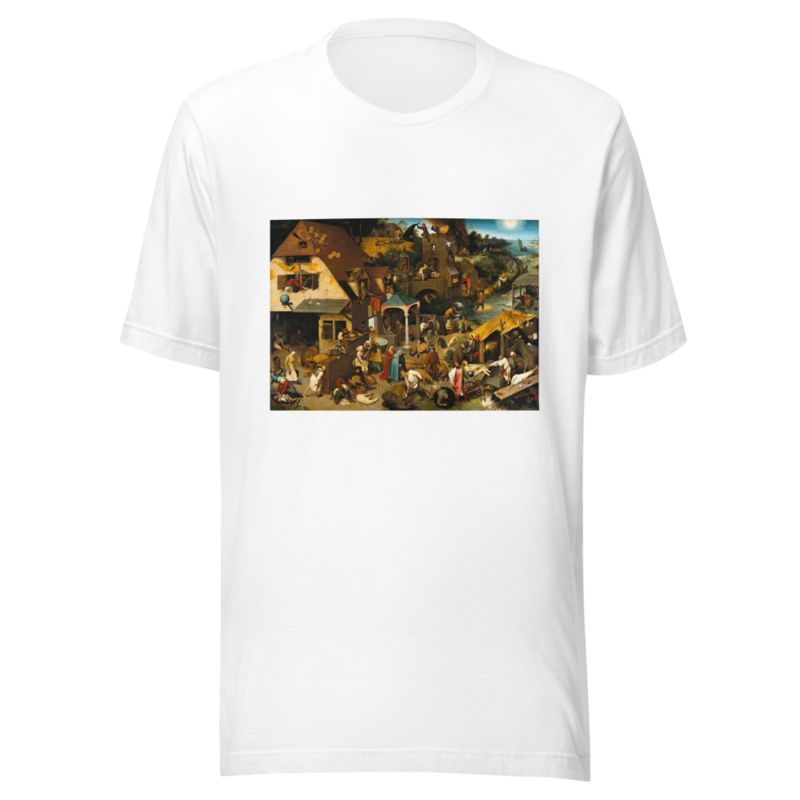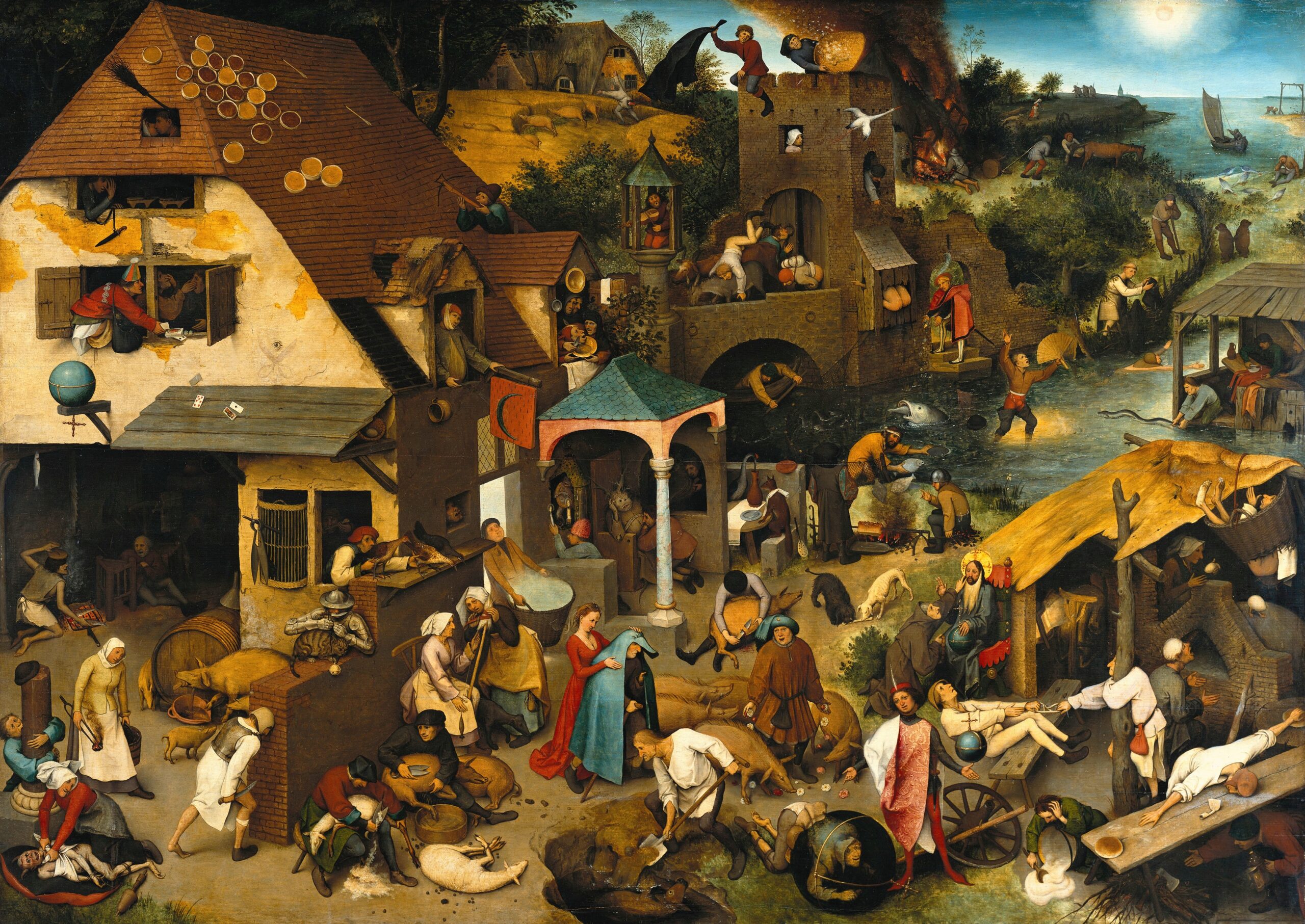Description
Netherlandish Proverbs by Pieter Bruegel The Elder printed on a T-Shirt
Also entitled The Blue Cloak or The Topsy Turvy World, this painting contains a literal illustration of idioms and aphorisms of 16th century Flemish life. Whereas some of the idioms have been lost to history, others are still relevant and in use today. Although other artists and authors had produced paintings and books on proverbs, this painting is considered to be the first large-scale rendition of the theme. The proverbs, of which there are over 100, as well as the early titles, are meant to illustrate human stupidity and foolishness. The painting was so popular that Pieter Brueghel the Younger reproduced up to twenty copies of it, many of which included various renditions on the proverbs.
About the T-Shirt
Regular fit
Standard length, the fabric easily gives into movement
Casual wear
A classic, everyday option loved by our customers
Side-seamed
Constructed by sewing two parts together, creating a fitted look
The Unisex Staple T-Shirt feels soft and light with just the right amount of stretch. It’s comfortable and flattering for all. We can’t compliment this shirt enough–it’s one of our crowd favorites, and it’s sure to be your next favorite too!
- Solid colors are 100% Airlume combed and ring-spun cotton
- Ash color is 99% combed and ring-spun cotton, 1% polyester
- Heather colors are 52% combed and ring-spun cotton, 48% polyester
- Athletic and Black Heather are 90% combed and ring-spun cotton, 10% polyester
- Heather Prism colors are 99% combed and ring-spun cotton, 1% polyester
- Fabric weight: 4.2 oz./yd.² (142 g/m²)
- Pre-shrunk fabric
- 30 singles
- Side-seamed construction
- Tear-away label
- Shoulder-to-shoulder taping
- Blank product sourced from Nicaragua, Mexico, Honduras, or the US
Pieter Bruegel The Elder (1525 – 1569)
Pieter Bruegel the Elder was the most significant artist of Dutch and Flemish Renaissance painting, a painter and printmaker from Brabant, known for his landscapes and peasant scenes (so called genre painting); he was a pioneer in making both types of subject the focus in large paintings.
He was a formative influence on Dutch Golden Age painting and later painting in general in his innovative choices of subject matter, as one of the first generation of artists to grow up when religious subjects had ceased to be the natural subject matter of painting. He also painted no portraits, the other mainstay of Netherlandish art. After his training and travels to Italy, he returned in 1555 to settle in Antwerp, where he worked mainly as a prolific designer of prints for the leading publisher of the day.
Only towards the end of the decade did he switch to make painting his main medium, and all his famous paintings come from the following period of little more than a decade before his early death, when he was probably in his early forties, and at the height of his powers.






Reviews
There are no reviews yet.